DMDD, isolated from Averrhoa carambola L., ameliorates diabetic nephropathy by regulating endoplasmic reticulum stress-autophagy crosstalk
- PMID: 39267098
- PMCID: PMC11391757
- DOI: 10.1186/s13020-024-00993-z
DMDD, isolated from Averrhoa carambola L., ameliorates diabetic nephropathy by regulating endoplasmic reticulum stress-autophagy crosstalk
Abstract
Background: Studies have shown that Averrhoa carambola L. possesses therapeutic potential for diabetes and related complications. However, the specific beneficial effects and molecular mechanisms of 2-dodecyl-6-meth-oxycyclohexa-2,5-diene-1,4-dione (DMDD) isolated from Averrhoa carambola L. on diabetic nephropathy (DN) require further investigation.
Methods: 80 C57BL/6 J male mice were subjected to a 1-week adaptive feeding, followed by a high-fat diet and intraperitoneal injection of 100 mg/kg streptozotocin (STZ) to construct an in vivo DN model. Additionally, human renal proximal tubular epithelial cells (HK-2) induced by high glucose (HG) were used as an in vitro DN model. The expression levels of epithelial-mesenchymal transition (EMT), endoplasmic reticulum stress (ERS), and autophagy-related proteins in renal tubular cells were detected by Western Blot, flow cytometry, immunofluorescence, and enzyme-linked immunosorbent assay (ELISA) staining. Transcriptome analysis revealed was conducted to elucidate the specific mechanism of by which DMDD mitigates DN by inhibiting ERS and autophagy. HK-2 cells were transfected with IRE1α overexpression lentivirus to reveal the role of IRE1α overexpression in HG-induced HK-2.
Results: The experimental data showed that DMDD significantly reduced blood glucose levels and improved renal pathological alterations in DN mice. Additionally, DMDD inhibited the calcium (Ca2+) pathway, manifested by decreased autophagosome formation and downregulation of LC3II/I, Beclin-1, and ATG5 expression. Moreover, in HG-induced HK-2 cells, DMDD suppressed the overexpression of GRP78, CHOP, LC3II/I, Beclin1, and ATG5. Notably, IRE1α overexpression significantly increased autophagy incidence; however, DMDD treatment subsequently reduced the expression of LC3II/I, Beclin1, and ATG5.
Conclusion: DMDD effectively inhibits excessive ERS and autophagy, thereby reducing renal cell apoptosis through the IRE1α pathway and Ca 2+ pathway.
Keywords: 2-Dodecyl-6-Meth-Oxycyclohexa-2,5-Diene-1,4-Dione; Autophagy; Diabetic nephropathy; Endoplasmic reticulum stress.
© 2024. The Author(s).
Conflict of interest statement
The authors declare that the research was conducted in the absence of any commercial or financial relationships that could be construed as a potential competing interests.
Figures


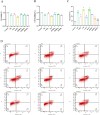
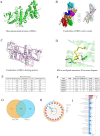
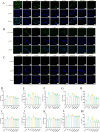
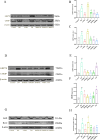


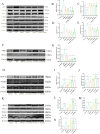

Similar articles
-
2-Dodecyl-6-Methoxycyclohexa-2, 5-Diene-1, 4-Dione isolated from Averrhoa carambola L. root inhibits high glucose-induced EMT in HK-2 cells through targeting the regulation of miR-21-5p/Smad7 signaling pathway.Biomed Pharmacother. 2024 Mar;172:116280. doi: 10.1016/j.biopha.2024.116280. Epub 2024 Feb 17. Biomed Pharmacother. 2024. PMID: 38368837
-
Protective effect of DMDD, isolated from the root of Averrhoa carambola L., on high glucose induced EMT in HK-2 cells by inhibiting the TLR4-BAMBI-Smad2/3 signaling pathway.Biomed Pharmacother. 2019 May;113:108705. doi: 10.1016/j.biopha.2019.108705. Epub 2019 Mar 13. Biomed Pharmacother. 2019. Retraction in: Biomed Pharmacother. 2024 Feb;171:116196. doi: 10.1016/j.biopha.2024.116196. PMID: 30877882 Retracted.
-
2-dodecyl-6-methoxycyclohexa-2,5-diene-1,4-dione isolated from Averrhoa carambola L. root ameliorates diabetic nephropathy by inhibiting the TLR4/MyD88/NF-κB pathway.Diabetes Metab Syndr Obes. 2019 Aug 7;12:1355-1363. doi: 10.2147/DMSO.S209436. eCollection 2019. Diabetes Metab Syndr Obes. 2019. PMID: 31496773 Free PMC article.
-
2-Dodecyl-6-methoxycyclohexa-2,5-diene-1,4-dione, isolated from the root of Averrhoa carambola L., protects against diabetic kidney disease by inhibiting TLR4/TGFβ signaling pathway.Int Immunopharmacol. 2020 Mar;80:106120. doi: 10.1016/j.intimp.2019.106120. Epub 2020 Jan 20. Int Immunopharmacol. 2020. PMID: 31972423
-
Protective Effects of 2-Dodecyl-6-Methoxycyclohexa-2,5 -Diene-1,4-Dione Isolated from Averrhoa Carambola L. (Oxalidaceae) Roots on High-Fat Diet-Induced Obesity and Insulin Resistance in Mice.Cell Physiol Biochem. 2016;40(5):993-1004. doi: 10.1159/000453156. Epub 2016 Dec 7. Cell Physiol Biochem. 2016. PMID: 27941348
Cited by
-
2-dodecyl-6-methoxycyclohexa-2,5-diene-1,4-dione protects against MPP+-induced neurotoxicity by ameliorating oxidative stress, apoptosis and autophagy in SH-SY5Y cells.Metab Brain Dis. 2025 Jan 29;40(1):113. doi: 10.1007/s11011-025-01544-7. Metab Brain Dis. 2025. PMID: 39878879
References
-
- Yuan D, Liu XM, Fang Z, et al. Protective effect of resveratrol on kidney in rats with diabetic nephropathy and its effect on endoplasmic reticulum stress. Eur Rev Med Pharmacol Sci. 2018;22(5):1485–93. - PubMed
Grants and funding
LinkOut - more resources
Full Text Sources
Research Materials
Miscellaneous

